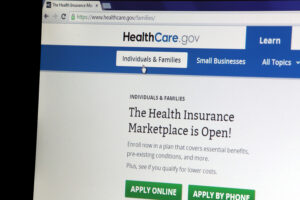COLUMBUS, Ga. – As employers continue to load more health care expenses onto workers, more than half (53%) of employees are still choosing a major medical plan based on factors that may have little to do with the total cost of health care for which they are increasingly responsible.
According to the 2015 Aflac Open Enrollment Survey released Sept. 22 by Aflac, the leading provider of voluntary insurance at the work site in the United States, most workers (75%) at least somewhat agree that even with their health insurance coverage, their medical copays and other out-of-pocket costs are more than they can afford at times. In spite of this, however, a significant number of consumers lack the desire to research their insurance benefits.
The 2015 Aflac Open Enrollment Survey was conducted among 2,000 U.S. adults employed either full or part time in June and July 2015 by Lightspeed GMI on behalf of Aflac.
Please! I’ll do anything but research my benefits…
Spending more time researching benefits choices and reading the fine print could help employees during this open enrollment period. Even though the terms of health insurance policies have likely changed, over half (56%) say they spend less than 30 minutes researching their benefits, and over one-third (34%) say they spend less than 15 minutes.
In fact, according to Aflac’s survey, many would rather do almost anything else than research their benefits:
- More than a third (38%) would rather clean out their email inbox
- Nearly 1 in 4 (23%) would rather clean their toilet
- 18% would rather do their taxes
Short-term gains, long-term financial pains?
Workers’ concerns about their inability to meet health care-related financial obligations don’t necessarily translate into how they choose a health insurance plan. Nearly one-third (30%) of workers say monthly premiums are the most important factor when selecting their major medical plan each year, while almost 1 in 4 (23%) state that they are most concerned with whether their doctors/health providers participate in the plan. Although potentially high costs of coinsurance and deductibles can present significant risk to personal and family finances, only 16% view the percentage of coinsurance they’ll pay for health care services as the most important factor. Just 14% say it’s the amount of the annual deductible.
“Despite the shift to more consumer-directed health care, U.S. workers are still not moved by the full financial consequences of their health insurance choices during open enrollment,” said Matthew Owenby, senior vice president, chief human resources officer at Aflac. “In a perfect world, workers would weigh not only the monthly cost of an insurance plan, but also how much of the total cost of their health care they’ll be responsible for to cover any unexpected out-of-pocket costs. In a sense, they are rolling the dice with their financial future.”
The High-Deductible Blues
Nearly half (46%) of employees selected a major medical/health insurance plan with a high deductible of $1,000 or more last year, up from 34% who said the same in 2014. And many who chose a high-deductible option were not satisfied with that choice:
- Over half (52%) at least somewhat agree that they regret choosing a high-deductible health plan (HDHP);
- Most (59%) at least somewhat agree that their HDHP was financially detrimental for themselves and/or their family;
- Nearly half (48%) at least somewhat agree that they did not understand how an HDHP really works; and
- Almost 4 in 10 workers (39%) noted their health insurance gives them some of the protection they need, but a serious illness or accident would still create a financial burden for them.
Workers’ insurance coverage expectations
“By spending more time researching their options in order to better understand what the insurance plan pays for and what they’re liable for, consumers can make better choices and be better prepared for a serious health event. Employers can help too by providing additional options like a health savings account and voluntary insurance to help employees pay for the deductibles and other out-of-pocket costs,” said Owenby.
To learn more about the 2015 Aflac Open Enrollment Survey, visit AflacWorkForcesReport.com or follow @aflac on Twitter.
About the 2015 Aflac Open Enrollment Survey: The 2015 Aflac Open Enrollment Survey of the Aflac WorkForces Report was conducted by Lightspeed GMI from June 23-July 2, 2015, among 2,000 U.S. adults ages 18 and older who are employed full or part time at a company with three or more employees. This online survey is not based on a probability sample and therefore no estimate of theoretical sampling error can be calculated. For complete survey methodology, including weighting variables, please contact Darcy Brito at [email protected] or 706.320.2358.
About Lightspeed GMI: Lightspeed GMI is an award-winning global digital data collection enterprise. Founded in 1996, its innovative technology and proven sampling methodologies deliver operational excellence throughout the online research process. With more than 5.5 million online research respondents in 45 countries, Lightspeed GMI’s proprietary panels deliver unparalleled quality, capacity and targeting. Headquartered in Warren, New Jersey, Lightspeed GMI is part of the Kantar, the data investment management arm of WPP, the world leader in marketing communication services. For more information, visit www.lightspeedgmi.com.
About Aflac: In the United States, Aflac is the leading provider of voluntary insurance at the work site. Through its trailblazing One Day Pay℠ initiative, Aflac U.S. can receive, process, approve and disburse payment for eligible claims in one business day. Aflac individual and group insurance products help provide protection to more than 50 million people worldwide. In 2015, Fortune magazine recognized Aflac as one of the 100 Best Companies to Work For in America for the 17th consecutive year. Also, in 2015, Fortune magazine included Aflac on its list of Most Admired Companies for the 14th time, ranking the company No. 1 in innovation for the insurance, life and health category. To find out more about Aflac visit aflac.com or espanol.aflac.com.













